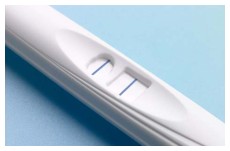Your Baby Development: 4 Weeks Old
How big is your baby? This week your baby will be weighing around 9 pounds and measuring 21 inches if he/she was of average size at birth. At this stage you may notice that baby’s bowel movements begin to fall into a regular pattern, and he/she should be passing one or two stools per day. His/Her grasp reflex is also developing and he/she may briefly hold onto anything you place in his/her hand. Head movements are also improving with baby being able to move his/her head from side to side to follow an object. Baby may be able to lift his/her head enough to clear beneath him/her, even if it may take as long as 30 seconds to do so. He/She may even be able to briefly hold his/her head up when lying on his/her stomach. You will also notice that baby is getting more mobile and now kick his/her legs in the air. This is why it is so important not to leave him/her alone when one the changing table, or any other surface from which baby could fall. Failure to Thrive If your baby has not gained enough weight to reach his/her birth weight by this stage then your pediatrician may become concerned. He may also become concerned if your baby gains weight and then suddenly stops for no apparent reason. What can you do if this is the case? Trying to get your baby to take in more when he/she does feed or trying to get him/her to feed more often is one way. If your baby is not getting enough milk from feeding, then you may be advised to offer a supplementary feed with formula milk. Your pediatrician will be able to advise you on this matter if you are concerned that your baby is not developing and growing as he/she should be.Baby Development Milestones This Week
Physical Development
- Rolls partway from side to back
- When pulled to sitting position, may hold head in line with back
- Can grasp objects when fingers are pried open, but quickly drops it
Mental & Social Development
- May make an “ah” sound when he sees parents or hears parents voices
- May clutch at person holding him/her
- May make throaty sounds
- Straps and snaps are secure so they can’t work loose
- Belts and buckles have some form of backup
- Check the manufacturers weight and age recommendations
- The fabric is sturdy and washable
- Seams are reinforced
- Shoulder and neck straps are cushioned
- Paddle belts make the carrier comfortable for you
- Products meet the Juvenile Products Manufacturers Association (JPMA) safety standards
- Take one finger in your hand, holding it finger tip down and away from you
- Snip or cut the nail straight across
- Take caution not to cut the flesh underneath the nail.
- You can file the nails with an emery board
- Cuddle baby close to you when you hold him
- Swaddle him tightly in a receiving blanket
- Before he/she sleeps pre warm his/her sheets with a heating pad or hot water bottle. Make sure the sheets are not to hot and remove the heat source before you put him down.
- Dress him in a blanket sleeper.
- Apply a lubricant to the thermometer.
- Lay baby on his/her stomach across your lap or on a firm surface.
- Hold baby steady to prevent any sudden movements. Spread his/her buttocks until you see the anal opening. Gently insert the thermometer in the opening about 1/2 inch and hold it in place until you can get an accurate reading.
- A normal Rectal temperature is 98.2-100.4F (36.8-38C)
- Make sure his/her underarm is clean. Place the thermometer in the armpit.
- Press baby’s arm tightly against his/her side
- After 4-5 minutes remove the thermometer and read the temperature.
- A normal Axillary temperature is 95-99F (35-37.2C)
- Lay baby on his/her back on a safe surface and turn his/her head to the side.
- Gently pull back his ear to straighten the ear canal. Point the thermometer into the ear canal.
- Activate the thermometer while holding the ear canal open/ Wait for the beep.
- Repeat the process in the other ear, and take the highest temperature reading.
- A normal Ear temperature is 97.8-99.7F (36.6-37.7C)
During the deepest phase of non-REM sleep, growth hormone is released in baby’s body and he/she actually grows in his/her sleep!
Baby Week4



